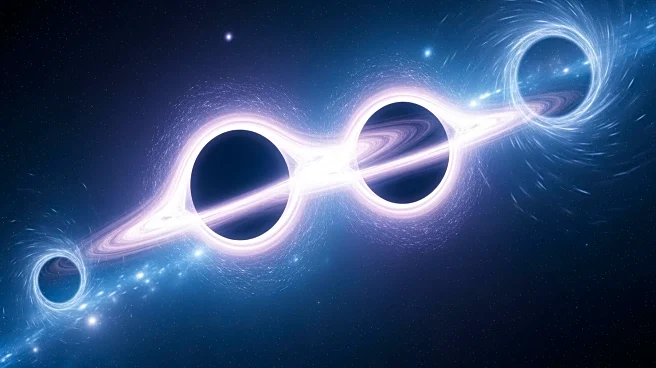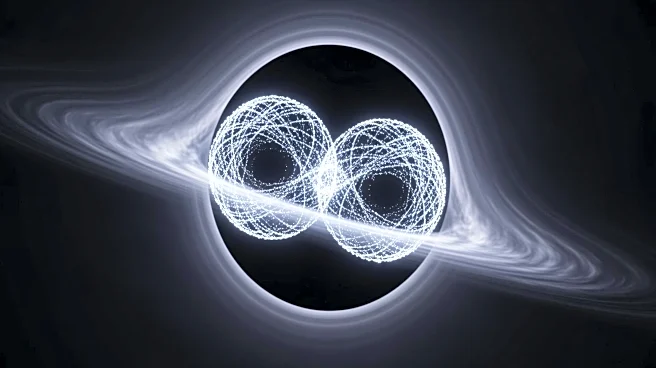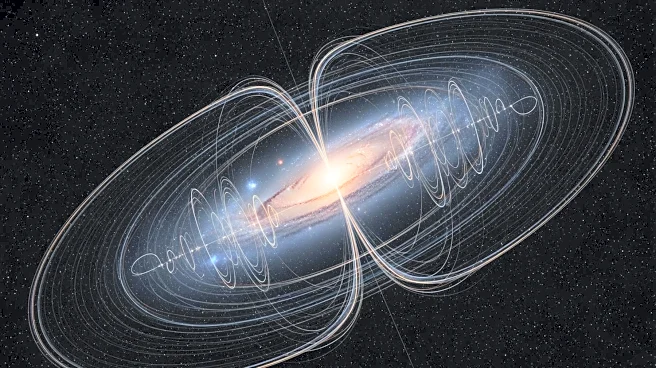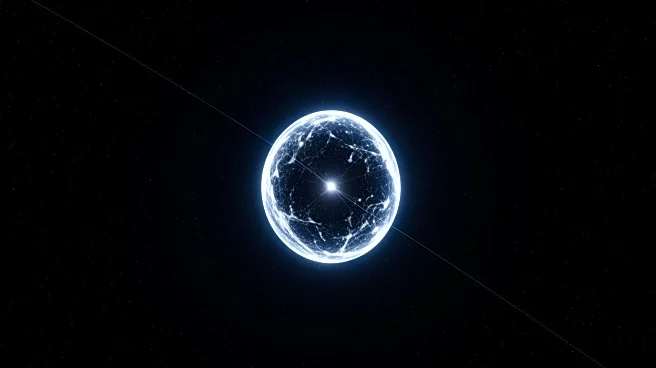What's Happening?
Researchers at Brandeis University have developed a mathematical model suggesting that quantum entangled black holes may create lumpy space-time tunnels, known as 'caterpillar wormholes.' This study builds on previous theories that link quantum entanglement
and wormholes, proposing that the connection between black holes is more complex than initially thought. The model indicates that these wormholes are not smooth but contain bumps made of matter, offering new insights into the mysterious interiors of black holes.
Why It's Important?
This research is significant as it advances the understanding of black holes and quantum entanglement, two areas that remain largely enigmatic in physics. The findings could have implications for the development of a complete theory of quantum gravity, potentially revolutionizing the field. Understanding the nature of wormholes and their connection to black holes could lead to breakthroughs in theoretical physics and cosmology, impacting how scientists perceive the universe's structure.
Beyond the Headlines
The study's implications extend to quantum computing, as researchers may use quantum computers to simulate black holes and wormholes, enhancing knowledge in both quantum theory and gravity. This interdisciplinary approach could inspire new algorithms and technologies, bridging gaps between theoretical physics and practical applications. The research also raises ethical and philosophical questions about the nature of reality and the universe's interconnectedness.













